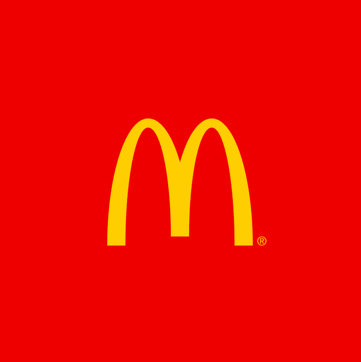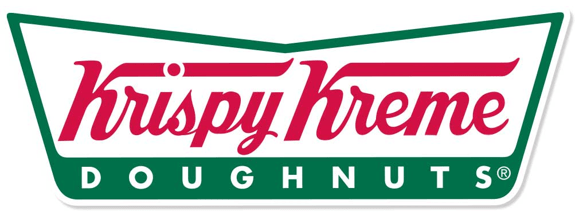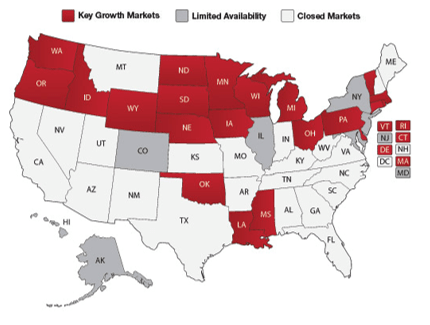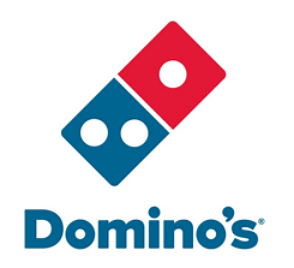Overview: Comparison Review of Different Franchises
Many people dream of being their own boss or owning their own business. There are many different ways to be a business owner.
Opening a small business, particularly a restaurant, is a huge financial gamble. Many fledgling restaurants do not make it off the ground and leave their founders in financial trouble.
Owning a restaurant franchise, however, is different. A franchise allows business owners to piggyback off the success of large, stable companies.
They take away much of the financial and personal risk, yet allow entrepreneurs to fulfill their dream of self-employment. Many people run into a few common questions when they first learn about restaurant franchises such as:
- What is a franchise?
- Is opening a franchise expensive?
- What kinds of companies offer franchise agreements?
Before anyone could possibly decide if a restaurant franchise is a good fit for them, it is important to understand how a franchise works and what different franchise companies have to offer.
Three major franchise companies—McDonald’s, Krispy Kreme, and Domino’s Pizza—can provide a good idea of what different kinds of franchises can offer a prospective owner. Each comes with advantages and drawbacks that are important to understand.
See Also: Coffee vs. Gym vs. Hotel vs. Ice Cream Franchise Opportunities | Comparison Guide
What Are Restaurant Franchises?
Different businesses will have different needs, and this is a business model that can change to suit the requirements of individual corporations. When a restaurant chain needs to expand their business quickly and efficiently, they will often sell the rights to their brand and product to private entrepreneurs.
The chain, or franchisor, will enter into an ongoing contract with the entrepreneur, or franchisee, that allows them to delegate the management of their restaurants on a large scale.
A fast food franchise is like a ready-made business that franchisees may purchase and run as they see fit. They will be contractually obligated to maintain certain modes of operation and product standards to keep the brand uniform on a large scale.
However, aside from these requirements, franchisees are essentially self-employed. A food franchise is a classic example of a symbiotic relationship; both the franchisor and the franchisee participate in a give-and-take that benefits them both.
What Are Some Benefits of Opening a Franchise?
A fast food franchise or a restaurant franchise offers many benefits of opening a small business with fewer risks and drawbacks.
Because a franchise is an established company with a tested product, brand, and business model, a franchisee has the opportunity to open a new business that already has a high performance record. This cuts back on costs and risks because a franchisee will not have to perform any product development or testing.
Food franchise owners can open their own business without ever having to worry about finding investors or qualifying for business loans. Building a business on the foundation of a successful franchise company can reduce costs in many ways. Larger franchise companies will have more resources at their disposal, which allows them to build a more recognizable brand and can take advertising pressure off franchisees.
Don’t Miss: Top Best Military Credit Cards | Ranking | Best Credit Cards for Military (Active & Veterans)
What Are the Costs of a Fast Food Franchise?
Opening a franchise has many advantages, but purchasing the rights to an established product does not come without a cost. It is relatively standard for franchisors to charge royalties or fees in exchange for the use of their brand and product. Some charge a monthly fee, but some make themselves entitled to a certain percentage of monthly sales or net income.
Set monthly fees are a franchise cost that can present unique challenges to locations with low sales. This is because when set costs are uniform for all franchise locations, those with high sales must pay the same as those with low sales. Franchise owners have the potential to make more profit, but they are also at a higher risk of losing money if sales take a nosedive.
A prospective franchisee must, essentially, buy their way into a franchise company. Applicants will be expected to bring a certain amount of private capital to the table to cover the cost of franchise development fees for a new business location. Franchise costs can vary wildly depending on the franchise company and type of location that is being developed.
All-in-One Change Management Tools
Top Rated Toolkit for Change Managers.
Get Your Change Management Tool Today...
McDonald’s Franchise Agreement
McDonald’s is one of the largest and most sprawling food franchises in the world. Many people do not realize that McDonald’s restaurants can be privately owned, however—more than 80% are operated by franchisee owners. McDonalds franchises offer opportunities for business owners to be part of a hugely profitable company worldwide.



Image from McDonald’s
Competitive McDonald’s franchise applicants are capable of achieving high sales and overseeing multiple locations.
This is very attractive to prospective franchisees because multiple locations offer more opportunities to earn higher profits. Most McDonald’s franchise applicants who are approved are offered 20-year franchise licenses, which offers stability and time to grow in the business.
McDonald’s franchises can be very expensive and exclusive. However, it takes more than buying power to be competitive in the application process. All prospective franchisees must complete an interview process to assess their business, customer service, planning, and accounting skills.
If they are approved, they must participate in in-depth training to familiarize themselves with company policies and procedures.
A McDonald’s franchise offers business owners the opportunity to enjoy profits that may be impossible to achieve with a non-franchised small business.
The average gross profit for a McDonald’s franchise in the U.S. is $1,782,000. However, after all expenses, including franchise fees, have been subtracted, the total operating income for a restaurant with sales of that volume would be $153,900.
McDonald’s franchises pride themselves on product and service uniformity. This means that franchisees are given a very limited amount of freedom concerning production and procedures. Some people might find this creatively stifling, while others might thrive due to the straightforward boundaries.
Related: Cardpool Reviews—Is Cardpool Legit? What You Need to Know!
Franchise Costs and McDonald’s
The franchise costs associated with McDonald’s will be different depending on what kind of restaurant a franchisee chooses to purchase.
Most first-time McDonald’s franchise owners will purchase a preexisting restaurant either directly from the company or from the current franchisee. Some entrepreneurs will purchase newly constructed buildings, but this is less common and more costly.
In order to qualify for a McDonald’s franchise, applicants must have a certain amount of personal funds. Generally, they will be required to have a minimum of $500,000 in non-borrowed personal resources to cover franchise costs. Non-borrowed resources include: cash, securities, bonds, debentures, vested profit sharing, and business or real estate equity from anything but a personal residence.
Franchisees must provide a down payment for their restaurant from these non-borrowed personal resources.
A new building will require a down payment of 40% of the total price of the restaurant, and an existing building will require 25%. A franchisee can finance their restaurant through a lending company for up to 7 years, but the entire cost must be covered by the end of that period.
McDonald’s franchise owners must pay a monthly service fee to purchase the rights to the brand and products.
This is a percentage fee that is taken out of monthly sales and paid directly to the McDonald’s corporation. Currently, this fee is 4.0% of monthly sales. Franchisees must also pay monthly base or percentage rent that is a percentage of monthly sales.
Popular Article: Shopify Reviews—What Is Shopify? Is Shopify Safe? (Complaints, Payments & Review)



Krispy Kreme Franchise Agreement
A Krispy Kreme franchise offers business owners a different experience than McDonald’s. A higher level of independence is expected of prospective franchisees. The company seeks out owners with real estate experience and knowledge to help identify and develop new locations.



Image from Krispy Kreme
Prospective Krispy Kreme franchise owners are evaluated based on their experience managing multiple restaurant units, which increases their personal profitability. The company also requires that franchisees have the ability to help multiple units grow at one time. Owners are expected to be committed to upholding their high standards of customer service.
Once an applicant has gone through the interview process and been accepted into the company, they are required to attend intense training that can last as long as 16 weeks. Training usually takes place in Winston Salem, North Carolina, and covers areas like:
- Equipment maintenance
- Retail operations
- Production training
- Processing standards
- Shift and shop management
Franchisees are expected to have a holistic knowledge of the business. This will allow them to lead in an authentic way and quickly identify and resolve problems in their restaurants.
It is also important that Krispy Kreme franchise owners uphold the values of the company by enriching their communities. Franchisees are able to take advantage of corporate resources to help them promote fundraising programs for local causes.
The Cost of a Krispy Kreme Franchise
Like other food franchises, Krispy Kreme restaurants can be expensive to develop. Prospective Krispy Kreme franchise owners are required to have at least $300,000 in liquid assets for each unit that they intend to develop.
This is the minimum amount of money required to cover the franchise costs of opening a Krispy Kreme restaurant. Depending on the type of store being built, financial requirements can range from $275,000 to $1,911,250.
The cost of opening a Krispy Kreme franchise includes:
- Development fee of $12,500 to $25,000 per unit
- Franchise fee of $12,500 to $25,000 per unit
- Royalty fee of 4.5% of net sales
- Ad placement fund fee of 1% of net sales
According to a Forbes Report in 2014, the average revenue for a Krispy Kreme franchise was $2.57 million. It ranked higher than McDonald’s, which had an average of $2.5 million per store.



Image from Krispy Kreme
This is something very serious to consider when comparing the two because a Krispy Kreme franchise could end up costing less than a McDonald’s franchise, depending on the type of building being purchased.
Krispy Kreme was founded in the U.S. but has expanded into the international market. A Krispy Kreme franchise gives business owners the opportunity to open stores either nationally or internationally.
However, because Krispy Kreme is a very well-established brand, they are only developing certain markets with in the U.S. There are certain geographic areas in which franchisees are not permitted to open restaurants.
Domino’s Pizza Franchises
Domino’s Pizza franchises work based on what they call an “internally based franchise system”. They prefer to hire pizza franchise owners who have worked with the company and have practical experience in Domino’s restaurants.
Around 90% of Domino’s Pizza franchise owners learn the ropes by working in an already established restaurant before they begin their application process. Much like Krispy Kreme, the company believes that a practical and holistic knowledge of the business is important for its leadership.
Prospective Domino’s Pizza franchise owners are required to complete a certain amount of training dependent on the amount of practical experience they have working inside a Domino’s restaurant.
If a franchisee does not have 12 months of consecutive current management or supervisory experience at a Domino’s, which includes the Domino’s Pizza High Performance University Crew and General Manager in Training Programs, they will be required to follow through with a pre-qualification process, complete the training course, participate in practical in-store training, and participate in the Domino’s Pizza Prep School.



Image from Domino’s
Once a Domino’s Pizza franchise owner has been approved and has completed their training, they will face requirements that are a little different from Krispy Kreme or McDonald’s franchisees. The company requires that franchisees dedicate their full time to the management of the restaurant.
They are required to ensure that proper supervision is on the premises at all times. Many franchise agreements allow franchisees to use their own discretion about leadership delegation and work hours, but Domino’s is a little stricter about this issue.
Like other food franchises, it is important for Domino’s Pizza franchise owners to maintain product uniformity and fulfill their customer’s expectations. For this reason, all franchisees are required to ensure that approved menu items are available at all times. They are also forbidden from selling any unapproved products.
The Cost of a Domino’s Pizza Franchise
Compared to companies like Krispy Kreme or McDonald’s, opening a franchise with Domino’s is relatively inexpensive. A Domino’s Pizza franchise applicant is generally expected to have $75,000 of liquid capital. This is to ensure that initial costs can be covered.
The company expects that pizza franchise owners will need to invest between $141,650 and $542,400 to open their restaurant. This includes the $25,000 franchise fee but accounts for other start-up costs as well, such as payroll and initial supplies. Some costs are unavoidable, like the franchise fee, but others depend on the needs of individual restaurants and the cost of labor.
Domino’s Pizza franchises are subject to a percentage royalty fee. This money comes directly from the restaurant’s revenue and covers the cost of the logo and product rights that are owned by the Domino’s corporation. Each Domino’s Pizza franchise is currently charged 5.5% of their revenue. The average Domino’s sales per restaurant were $710,200 in 2014—this is the money brought in only by the sale of goods and does not directly reflect actual profit.
Read More: Hubspot Reviews—What Is Hubspot? (Services, Alternatives & Review)









Conclusion: Comparison Review of McDonald’s, Krispy Kreme, and Domino’s Pizza Franchises
It is impossible to definitively determine what kind of fast food franchise is the best. Some have higher expected profits while others have lower start-up costs.
Some are very focused on customer service, while others are focused on business growth. What makes one better than another, as far as franchise agreements are concerned, is a personal matter and something that each entrepreneur must choose for themselves.
Keep in mind some facts as you consider the advantages of the different franchise restaurants (this list only reflects the franchises discussed in this article):
- A Domino’s Pizza franchise is the least expensive to open.
- Krispy Kreme franchises had the highest revenue per restaurant as of 2014.
- Both Domino’s and Krispy Kreme franchises have lengthy training requirements.
- Each restaurant is highly focused on brand uniformity.
Each franchise company comes with its own benefits and disadvantages. The thing that really unites them all is that they are all fast service restaurants.
It is extremely important to keep in mind that, even for a franchise owner, the restaurant business can be very demanding. It is an industry that takes a huge amount of work to keep profitable and is something that requires a lot of passion.
Sometimes seeking passion is a good way to find the most sustainable path, and it may lead you to the best franchise company.
AdvisoryHQ (AHQ) Disclaimer:
Reasonable efforts have been made by AdvisoryHQ to present accurate information, however all info is presented without warranty. Review AdvisoryHQ’s Terms for details. Also review each firm’s site for the most updated data, rates and info.
Note: Firms and products, including the one(s) reviewed above, may be AdvisoryHQ's affiliates. Click to view AdvisoryHQ's advertiser disclosures.



